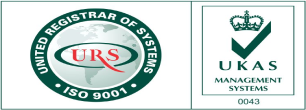
FloEFD For Aerospace and Defense
Developing more reliable products with innovative and proven solutions for your development process
Mentor Graphics technologies in 1D fluid system simulation, 3D thermal and fluid flow simulation as well as thermal and radiometric characterization hardware is used worldwide to ensure reliability, safety and comfort in aerospace and defense vehicles and their systems. OEMs as well as the supply chain utilize these solutions to stay competitive in the market and provide quality and reliability to their customers.
Aerodynamics
Whether dealing with external or internal aerodynamics, it is important to optimize the airflow and reduce flow separation in order to reduce losses in drag of an aircraft or pressure in a ducting system.
Anti-icing Systems
Anti-icing is critical for the safety of an aircraft. Weather conditions require pilots to enable anti-icing systems to prevent any ice formation on the vehicles surface. The performance of the distribution of the anti-icing agent over the whole wing length and the engine intake is important to ensure an equally distributed effective icing prevention.
Avionics Cooling
Avionics systems cover all electronics systems from exterior lighting through to navigation systems, in-flight entertainment and weather as well as radar systems in military, civil or space vehicles. Thermal management of avionics from component to whole avionics bay is the key to higher reliability of mission critical as well as safety systems. With requirements such as rugged, rad-hardened and SWaP influenced components and systems, effective thermal management is getting even more crucial in the design process.
Cabin Comfort Modeling
Cabin comfort modelling is important, not only for civil aviation but also military applications. In civil aviation, passenger satisfaction ensures competitive advantage and in military and space aviation stress & crisis situations require an environment conducive to helping the operator maintain control of the situation.
Component Design
Analyzing and optimizing component designs for better fluid flow and thermal performance can drastically reduce weight, energy consumption and cost of components thereby offering a competitive advantage to the manufacturer due to increased reliability and lifetime of the component.
Contaminant
Regardless of whether it’s carbon monoxide or chemical and biological toxins, reducing risk of introduction of contaminants into breathing air is crucial for occupant survival. Optimizing airflow management in such situations to reduce the threat, avoid it at all or increase necessary time to evacuate the affected area is the main task in such applications.
Engines & Engine Parts
Engine efficiency and emissions are both equally important. Higher efficiency translates into lower fuel consumption thereby enabling a longer range and duration for the mission. In addition, reliability of new engine and parts remains critical for safety and mission fulfillment.
Environment Control
Similar to cabin comfort modeling, environment control relates to the wellbeing of passengers. However cabin comfort modelling is more specific to the cabin and the comfort in it whereas environment control is often used for the overall system. Environment control systems (ECS) relate to fresh air distribution in the cabin and the ducting system – everything from engine bleed air to the cabin with all its components including heat exchangers etc. Component sizing and distribution of air, temperature and pressure control in the cabin are also key elements of such design efforts.
Fuel Systems
Hydraulics
Hydraulic components such as pistons, valves and pumps work under very high pressures. To increase their lifetime, it is necessary to design components that provide high flow rates, achieve low pressure loss and avoid destructive forces due to cavitation.
Hydraulic Systems
In hydraulic systems, the overall behavior of the system (especially in transient conditions) is of high importance. Often shock waves travel through the systems or fast transient component activities can bring a whole system into negative vibrations. Therefore, dampening components such as tanks and bladders have to be applied to reduce these effects.
Lighting/LEDs
In aerospace & defense lighting applications can range from low power floor or lavatory lights to high power landing or search lights. Thermal management of these lights with traditional light sources or LEDs is important in order to ensure reliability, quality and long lifetime. Excessive temperature affects LED brightness and light color while thermal radiation can bring materials to their limiting temperatures when using incandescent lighting.
Lubrication
Lubrication is critical for all moving components but especially in components and systems with high speeds of movement such as in engines and gearboxes. Lubricant distribution also influences system performance due to pressure changes and flow rates.
Lubrication Systems
The overall lubrication system design is important as it contains all the related components and analysis of their behavior in the system as a whole enables engineers to size the components and consider their transient behavior on the system.
Fresh & Waste Water System
Fresh and waste water systems are of high importance especially for long duration flights or space flight. Lavatories and kitchens have to be supplied with fresh water and the handling of the waste water is a natural by-product. Effective system performance for delivering the right pressure and flow rate to water sources is influenced by valves, pumps and piping systems including height differences.
Subsonic to Hyper sonic
The flow regime ranges from subsonic to hyper sonic with applications such as unmanned aerial vehicles (UAVs) over projectiles and nozzles to re-entry vehicles in space explorations. Mastering flow regimes accordingly is the key to analysis for all kinds of applications and vehicles including the influences on the system and their thermal behavior. Temperature and velocity influences include high altitude scram-jet intakes or engine nozzles influenced by the hot exhaust of the afterburner as well as extreme heat due to the friction influence during a re-entry into the atmosphere.
Testing
COTS semiconductor component Testing
Custom made semiconductors especially for the defense industry are certainly made specifically for the application profile with high tolerances and reliability. But with increased cost concerns Commercial Off The Shelf (COTS) components are considered increasingly. Such components however are often not made for harsh environments and therefore have to be tested thoroughly before applied in safety and mission critical systems.
IC/Transistor/Diode Testing
Semiconductor components such as ICs, transistors and diodes are the key element of every electronic system but are also very sensitive to the temperature. Especially in power electronics application the thermal management is critical and understanding the components and optimizing the thermal management with help of measurements helps to increase the components reliability and performance.
LED Testing
LED lighting is becoming a standard in all new aircraft designs and flight instruments. The lower power consumption, better efficiency and higher lifetime expectancy provide a higher reliability and competitiveness. However the thermal management is done, the LED performance changes over the lifetime and temperature and understanding the LEDs performance helps to choose the right LED and assure reliability and performance of the luminaire over its lifetime.
TIM Testing
In all electronic systems the thermal management is the main concern and with thermally critical components in contact with heat sinks, housings or good thermally conducting PCBs, the thermal resistance of that contact is the key factor in the heat flow path. Thermal Interface Material (TIM) used in such contacts is supposed to improve the thermal contact between those components and knowing the exact thermal resistance in dependency of pressure on or thickness of a TIM is important for a good thermal management of a system.


